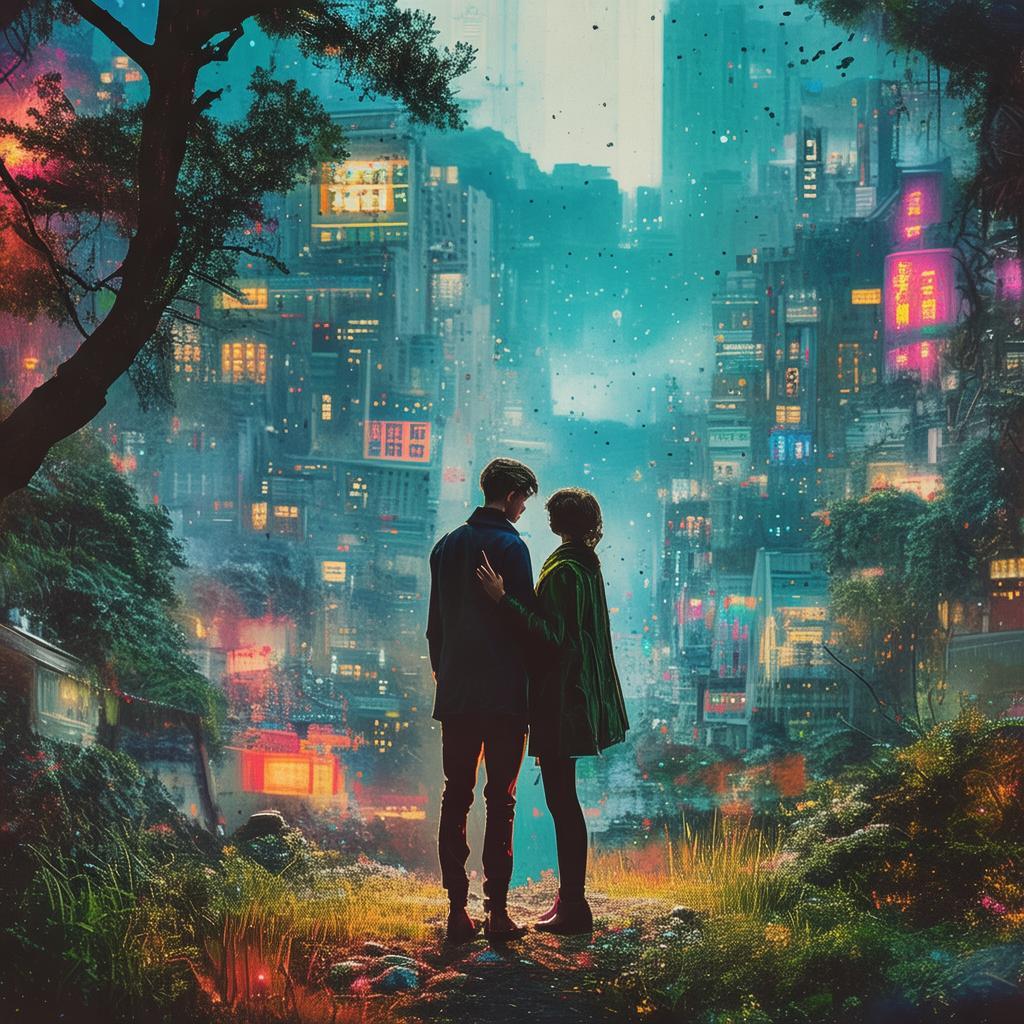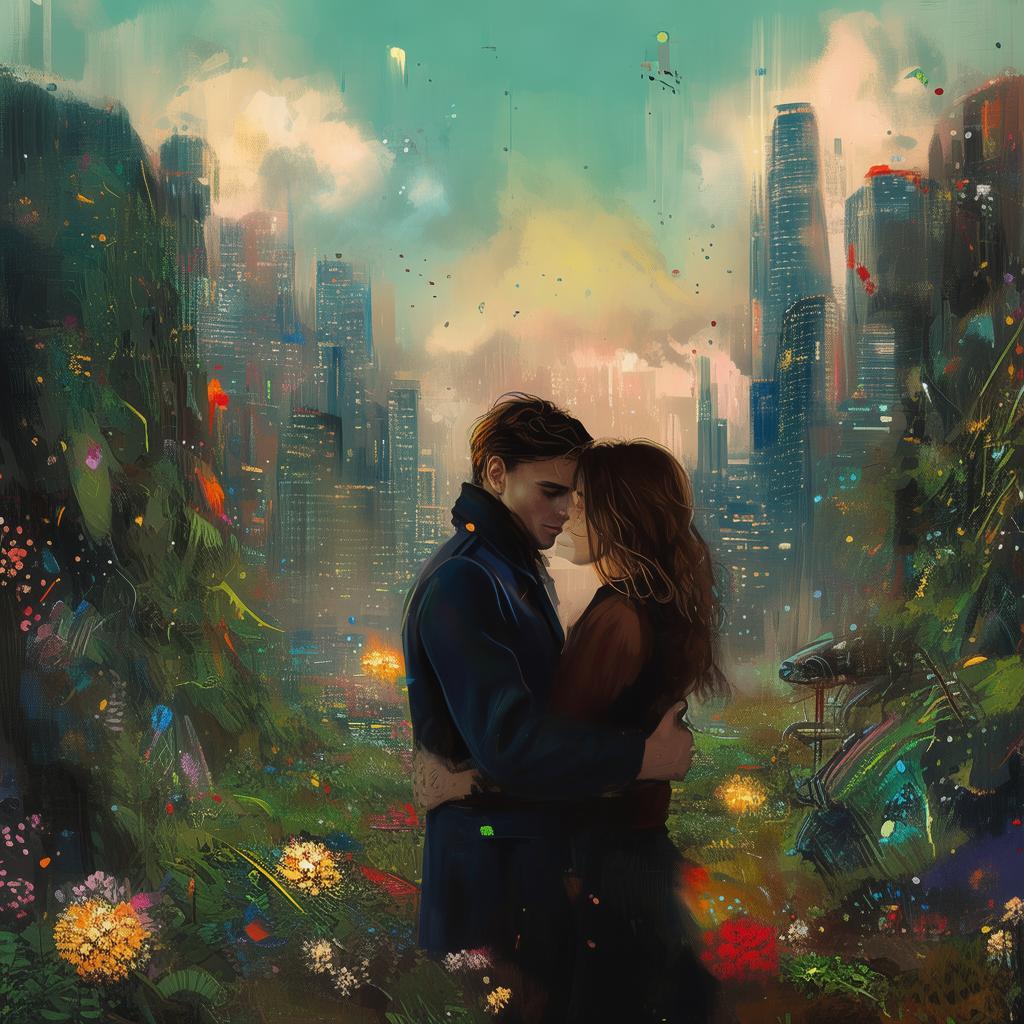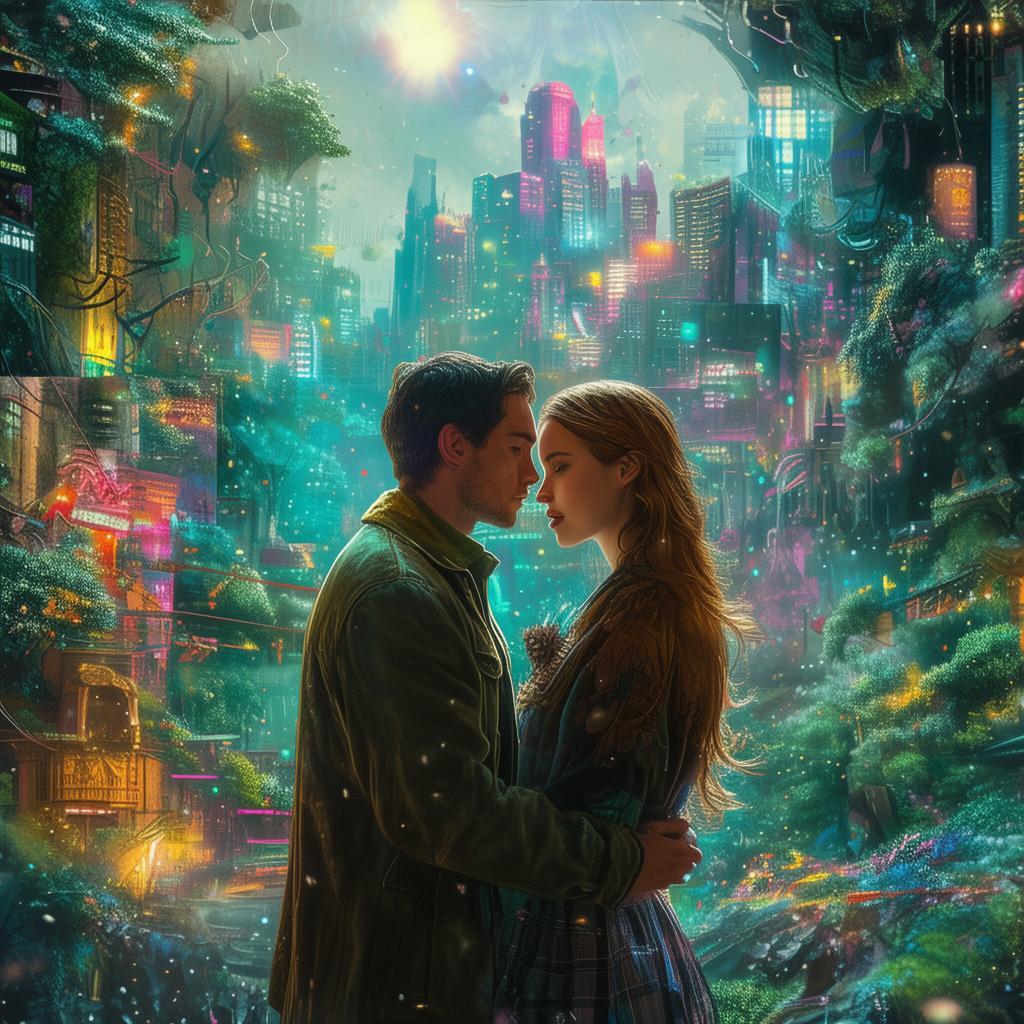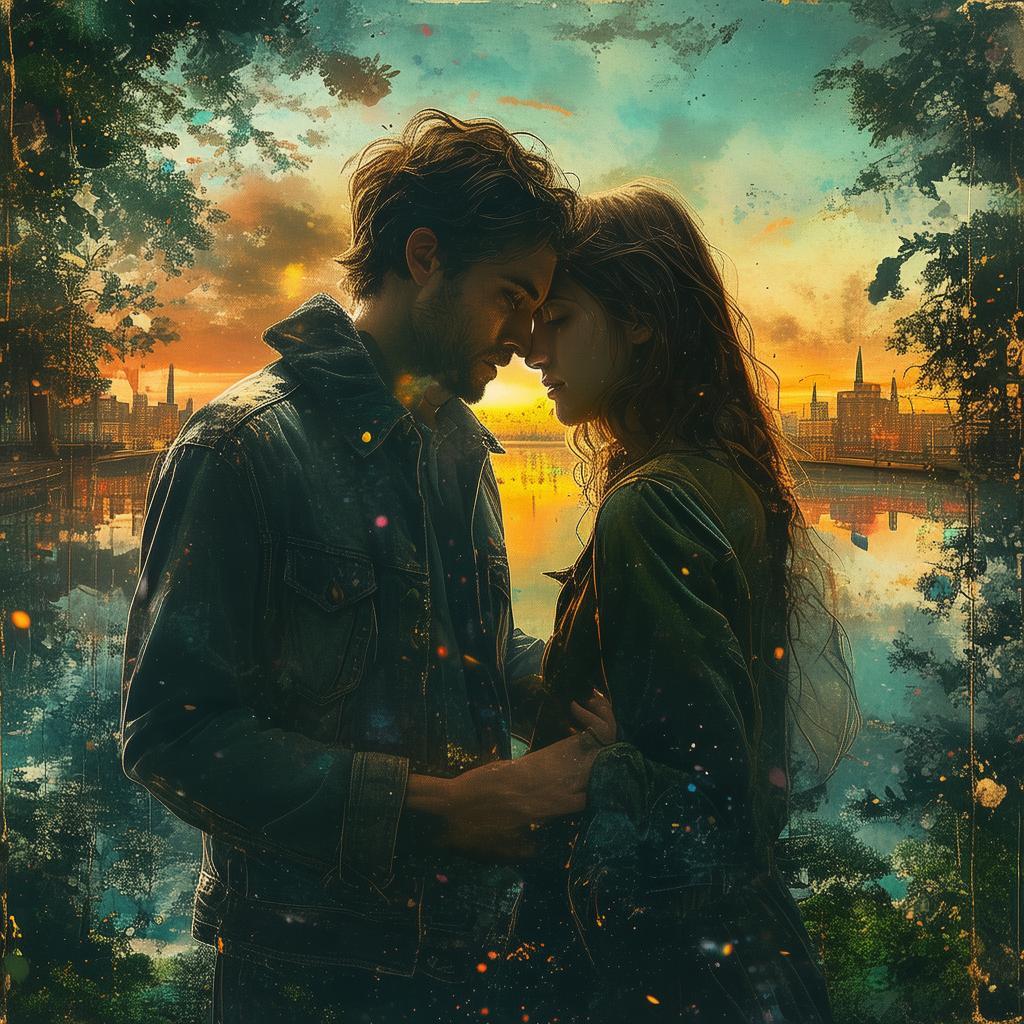The Tokyo Tragedy: Love in the Age of Tragedy
In the heart of Tokyo, where the neon lights flicker like stars in the night sky, two lives intertwined in the most unexpected way. Kaito, a skilled detective with a sharp mind and a tender heart, was on the brink of solving his most complex case. A case that had him on the edge of a cliff, both literally and metaphorically. Across the city, Aiko, a free-spirited artist with a knack for capturing life's beauty in every stroke of her paintbrush, was trying to forget the darkness that seemed to seep into every corner of her life.
The city was abuzz with whispers of a series of unsolved murders that left no traces behind, save for the blood-stained floor where each victim met their end. Kaito had dedicated years to this case, and now, with the discovery of a single clue that led him to a quaint little café on the outskirts of the city, he was certain that the final pieces were about to fall into place.
Aiko, who had taken a temporary respite from her art, frequented this café. She was a regular, often lost in thought, her eyes wandering over the quaint little shop, its walls adorned with her artwork. The café had become a sanctuary of sorts for her, a place where she could escape the harsh reality of her life and immerse herself in the simplicity of each moment.

One rainy evening, as the world outside seemed to weep for the victims, Kaito and Aiko found themselves sharing a table, each lost in their own world. It wasn't long before the detective's keen eye caught Aiko's painting on the café wall—a portrait that seemed to capture a story waiting to be told. Intrigued, Kaito approached the painting, his heart racing with a sense of familiarity he couldn't quite place.
The painting was of a woman with eyes that seemed to pierce through time, a haunting smile that promised secrets, and a background that seemed to mirror the darkness that enveloped Tokyo. The woman's eyes locked with Kaito's, and he felt as though she was speaking to him across the years. Aiko, sensing his fascination, came over and introduced herself, her voice laced with an undercurrent of pain.
The conversation that followed was a delicate dance between two people who were worlds apart but seemed to share a deep, unspoken connection. As they talked, Kaito couldn't shake the feeling that he was meant to be at that table, at that moment, with Aiko. Aiko, on the other hand, felt an inexplicable sense of calm and connection with Kaito, as if he was the answer to a question she hadn't yet asked.
The night passed in a blur of laughter and shared stories, but as dawn broke, so did the realization that their lives were inextricably linked by a web of tragedy. The murders, the painting, and now Kaito's suspicion that Aiko's past was somehow intertwined with the victims began to unravel.
Kaito's investigation led him to delve into Aiko's life, uncovering a tale of loss and betrayal that stretched back years. It turned out that Aiko's late mother had been the first victim of the mysterious murders, and Aiko had been the prime suspect until her mother's death was proven to be a suicide. The revelation shook Aiko to her core, and she found herself questioning everything she thought she knew about her mother's death.
As the story unraveled, Kaito and Aiko's relationship grew deeper, each of them drawn to the other by the gravity of their pasts and the intensity of the present. But the closer they came to the truth, the more danger seemed to loom over them. The killer, who seemed to be watching them, left cryptic messages and warnings, testing their resolve and pushing them to the brink of despair.
The climax of their story arrived when Aiko's mother's journal was found, revealing a series of events that had been hidden from Aiko. The journal spoke of a love triangle, a betrayal that had led to the murder of her mother's lover, and a subsequent cover-up. It also hinted at a conspiracy that reached higher than anyone had imagined.
The truth, when it finally came out, was a revelation that turned their world upside down. It wasn't just about the past; it was about the choices they made and the secrets they kept. Aiko discovered that her mother had loved her, despite her mistakes, and that the true villain was someone she had trusted deeply.
The ending was bittersweet, as Aiko and Kaito stood by the graves of the victims, both victims and survivors. They had faced the darkness and come out stronger, their love having withstood the test of tragedy. They decided to rebuild their lives together, not as two separate entities, but as a single entity, bound by their shared experiences and their love for one another.
The Tokyo Tragedy was not just a story of love; it was a story of survival, of overcoming the odds, and of the enduring power of human connection in the face of darkness. It was a story that would be whispered through the streets of Tokyo for years to come, a tale of two souls who found solace and strength in each other.
✨ Original Statement ✨
All articles published on this website (including but not limited to text, images, videos, and other content) are original or authorized for reposting and are protected by relevant laws. Without the explicit written permission of this website, no individual or organization may copy, modify, repost, or use the content for commercial purposes.
If you need to quote or cooperate, please contact this site for authorization. We reserve the right to pursue legal responsibility for any unauthorized use.
Hereby declared.









